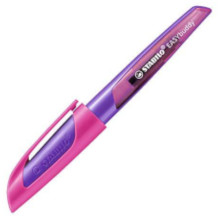Primary school bag purchasing advice: how to choose the right product
- The most important facts in brief
- For primary school pupils, classic satchels or mixed types of satchels and backpacks are the best choice. Pure backpacks are more suitable for pupils from the fifth grade upwards.
- Ergonomically shaped and breathable back pads, sufficiently wide shoulder straps and a good visual warning are particularly important for a good satchel.
- Some models have a height-adjustable back surface that allows the satchel to adapt to the child’s back so that it can grow with the child, so to speak.
- Satchels with a DIN 58124 certificate meet strict requirements in terms of ergonomics and visual warning elements.
- Rule of thumb: The satchel should not weigh more than 17 per cent of the child’s body weight.
Ready for the start of school
Most parents probably feel the same way about one thing: their children are growing up far too fast. While it feels like they have just pushed their baby through the park in a pram, the first day of school will soon be upon them. The start of school is an exciting event not only for children, but of course also for parents, grandparents and other relatives. They also have to decide which satchel their offspring will start their school career with. Of course, the satchel has to please the schoolchild, but it also has to fulfil other important criteria. While the look of the school bag plays a major role for the children, parents pay more attention to whether it is also visible in the dark and does not have a damaging effect on their child’s posture and growing spine.
In our comparison of the best school bags, we present the different types of school bags with their respective advantages and disadvantages. In the subsequent buying guide, we focus on the classic school satchels, which are particularly suitable for primary school pupils. We explain the most important buying criteria such as ergonomics and fit, weight and volume as well as safety. In addition, you will find out what to look out for when handling the school bag, which brands and models are particularly popular and where you can find further test reports on the subject of school bags.
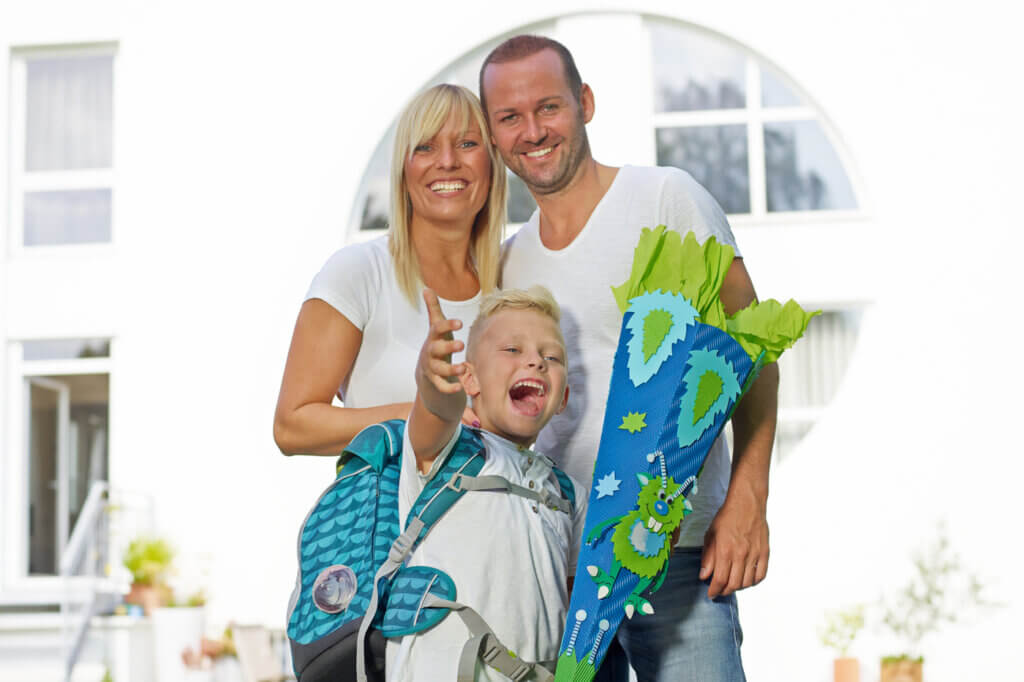
School satchel, school backpack or trolley?
The different types of school bags can be roughly divided into four types:
- the classic school satchel,
- school backpacks,
- hybrids of classic satchels and backpacks, and school trolleys.
- school trolleys.
In this section, we explain what distinguishes each type of school bag, what advantages and disadvantages they have and for whom they are particularly suitable.
The classic school bag: Ideal for primary school children
The term school satchel generally refers to the classic satchel in the shape of a box, also known as a school satchel. It is characterised by a stable construction, thanks to which school books and exercise books are optimally protected in the satchel. The satchel also has a secure stand. In addition, the foldable lid and the usually water-repellent material protect the contents well against moisture. The water-repellent properties of the material also make it easier to clean the satchel.

Satchels are typically equipped with reflectors over a large area and thus achieve a good visual warning effect. This makes children easily visible on the way to school, even at dusk. In addition to safety, satchel manufacturers place great emphasis on the ergonomics of their products. Good school satchels are equipped with a stable back plate and ergonomic back pads. An ergonomic satchel is particularly important for pupils who are still growing in order to avoid posture and movement problems as well as chronic back pain.
Thanks to the sturdy construction, school books and exercise books are optimally protected in the satchel and the satchel has a secure stand. In addition, the foldable lid and the usually water-repellent material secure the contents well against moisture. The water-repellent material properties also make it easier to clean the satchel.
With their high ergonomics and safety, satchels are the best choice for primary school pupils. Manufacturers are aware of this and usually choose very playful designs, such as pink unicorns for girls and colourful dinosaurs for boys. For older schoolchildren, the typical satchels are therefore often no longer “cool” enough. They are also somewhat bulkier and wider than school backpacks, but offer enough space for school materials.
Pro points
- High ergonomics
- Many reflector surfaces
- Stable construction
- Secure stand
- Robust and waterproof
- Easy to clean
Drawbacks
- Somewhat bulkier than a backpack and often very wide
- Designs primarily for younger students
The school backpack: modern and flexible
Older pupils, for example from the fifth grade onwards, usually prefer to choose a school backpack rather than a satchel. School backpacks are considered more modern and, with their less playful designs, are often more to the taste of adolescents than knapsacks. Some models differ little or not at all from classic backpacks and can therefore be used both at school and in leisure time, for example to stow swimming or sports gear. In addition, school backpacks are less bulky than satchels and can be stored in a more space-saving way. However, they are less stable, fall over more easily and the contents are less well protected. For example, school books and exercise books carried in backpacks quickly become dog-eared when they land on the floor at the end of the school day.
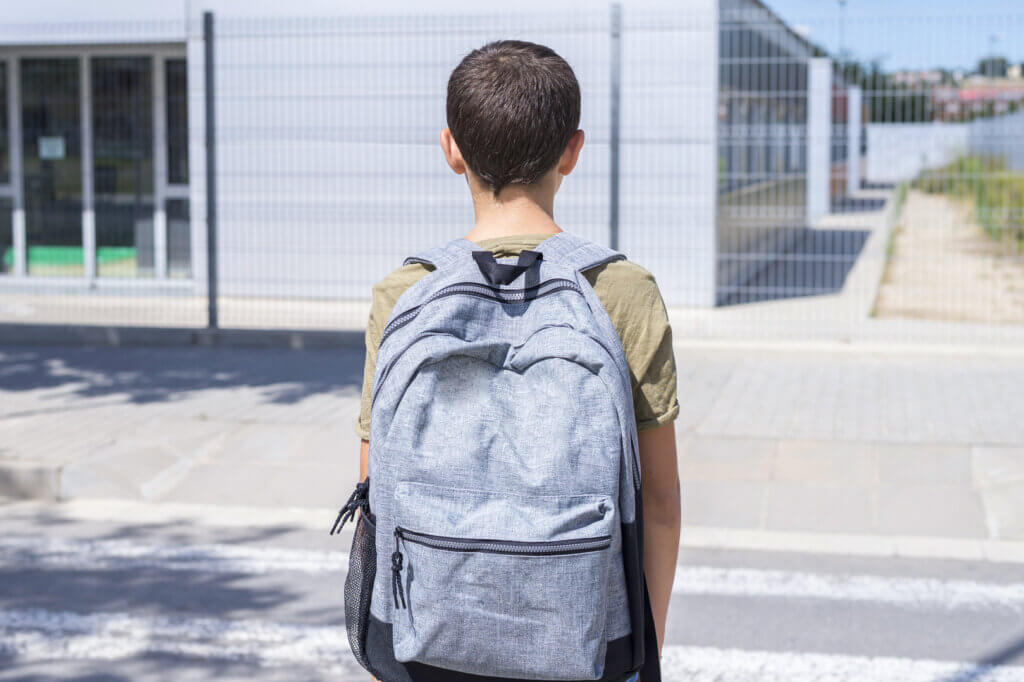
School backpacks are not suitable for younger pupils of primary school age. Due to the unstable back surface, they are clearly less ergonomic than the stable satchels. In addition, the weight of the school materials is less evenly distributed in the backpack. In addition, school backpacks usually have fewer or no reflective surfaces. Schoolchildren with a backpack are therefore more difficult to recognise at dusk than schoolchildren with a well-reflective satchel.
Pro points
- Modern designs
- More handy and flexible than satchels
- Allow great freedom of movement
- Can also be used in leisure time
Drawbacks
- Less ergonomic than satchels
- Few reflective surfaces
- Insecure stand
- Little protection for the contents
Mixed forms of satchel and backpack: all advantages combined
More and more manufacturers are trying to combine the advantages of satchels and school backpacks and offer mixed types, also known as hybrid models. In this way, they relieve schoolchildren and their parents of the decision between the two types of satchel. An example of such a hybrid is the Ultra model from the well-known school bag brand Scout. Typical of hybrid models are a stable back and base plate and flexible side pockets. The latter make the hybrid models less bulky than satchels. At the same time, the stable base plate ensures a firm footing. In addition, hybrid manufacturers pay attention to good ergonomics and equip their models with stable back constructions and height-adjustable carrying strap systems. Compared to the satchel, the contents of a hybrid are somewhat less well protected – at least in the flexible side pockets.
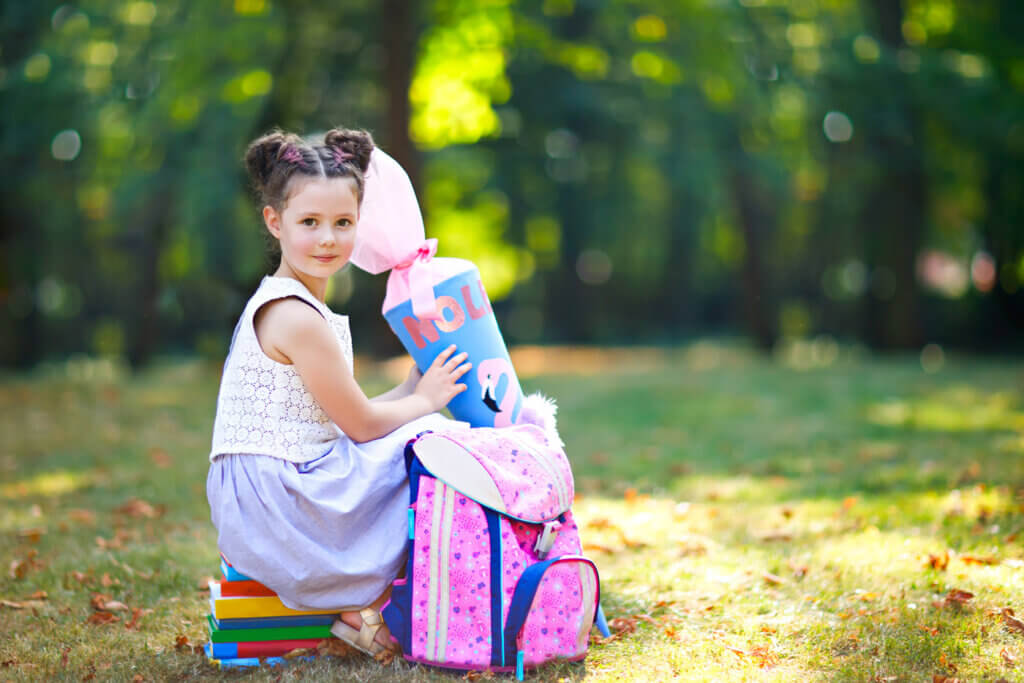
Ergonomic hybrid models that are sufficiently equipped with reflective surfaces are a good alternative to the classic school bag for primary school pupils. However, with their often somewhat more neutral designs, many hybrids are also well suited for older pupils from fifth grade onwards and are thus perfect transition models from primary to secondary school.
Pro points
- High ergonomics
- Mostly well equipped with reflective surfaces
- Sturdy construction
- Secure stand
- More robust than school backpacks
- Waterproof and easy to clean
Drawbacks
- Contents not optimally protected
The school trolley: Stable, but not ergonomic
The so-called school trolleys are school bags that are equipped with wheels and a handle like a travel trolley. This allows children to pull the satchel behind them instead of carrying it on their backs. The idea behind this is basically good: the children do not have to carry their often heavy school materials. However, when pulling the trolley, they adopt an unnatural posture in which they turn their shoulders and spine slightly backwards and put strain on one side. This posture can lead to posture problems and back pain in the long term. As an alternative to pulling the trolley, students can carry it on their backs like a classic school bag. However, the focus for manufacturers is more on the rolling function, so they often neglect the ergonomics of the back padding and carrying straps. Accordingly, the ergonomics and carrying comfort of trolleys are often significantly worse than those of good satchels or hybrids. In addition, trolleys have a higher dead weight due to their tyres and handle, which puts additional strain on the back.
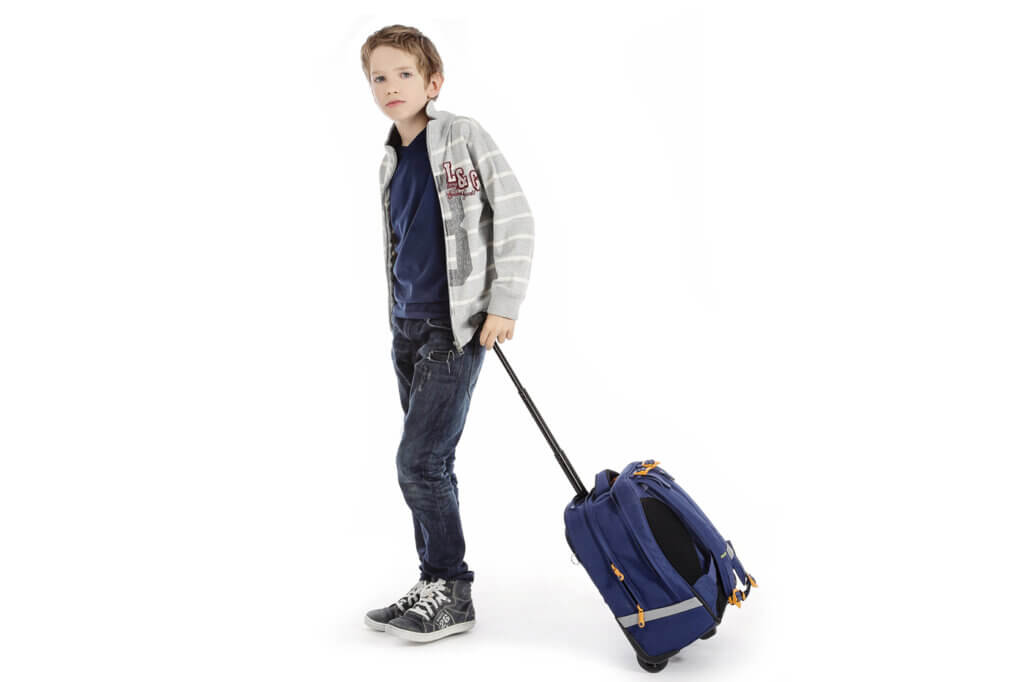
Ergonomics and rolling function are difficult to combine
If it were possible to combine the rolling function of the school trolley and high ergonomics in a school bag, we could probably have bought one long ago. However, in order to keep the tare weight of the satchel within reasonable limits despite the integrated wheels and telescopic handle, manufacturers most likely have no other option than to make concessions in terms of ergonomics.
In terms of safety, stability and robust construction, the school trolley is in no way inferior to the classic school satchel, but because of the risk of postural and back injuries, parents are better off choosing the tried-and-tested satchel or a good hybrid model for their children.
Pro points
- Practical roll function
- Plenty of space for reflectors
- Stable and robust construction
- Repels dirt and water
- Secure stand
Drawbacks
- Unhealthy posture when pulling
- Often less ergonomic and comfortable than satchels
- High weight due to carrier and wheels
- Often somewhat bulky and wide
In summary: Which satchel for which age?
The following table gives a good overview of which type of satchel is best suited for which grades and ages:
| Satchel type | For grade level | Suitable age |
| Satchel | 1 to 4 | 5 to 11 years |
| School backpack | From 5 | From 10 years |
| Hybrid model | 1 to 8 | 5 to 14 years |
| School trolley | Conditional from grade 1 | Conditional from 5 years of age |
The most important buying criteria
The market offers a large and varied selection of school bags. We explain in this section what you should pay particular attention to when buying.
Ergonomics and fit
Primary school children are still growing. It is therefore all the more important that their school bag is ergonomic and does not negatively influence their posture or put one-sided strain on the spine. In addition, it is important that the satchel does not cause any shifting of weight. This means that the weight should be as close to the spine as possible so that an upright gait remains possible. An ergonomic satchel is characterised by the following points:
- an ergonomically shaped, well-padded back surface
- a breathable and not too hard back padding
- a good, easily adjustable carrying strap system
- sufficiently wide (at least four centimetres), well-padded shoulder straps
- a width less than that of the child’s shoulders
The padding should be shaped so that as much surface area as possible rests against the back. Parents can find guidance in the DIN standard for school bags (DIN 58124). Satchels that want to be certified according to this standard must have, among other things, ergonomically shaped and breathable back padding, carrying straps that are at least four centimetres wide, a carrying handle for lifting the satchel, and be built in a high format. Then they receive the test seal “manufactured according to DIN 58124”.
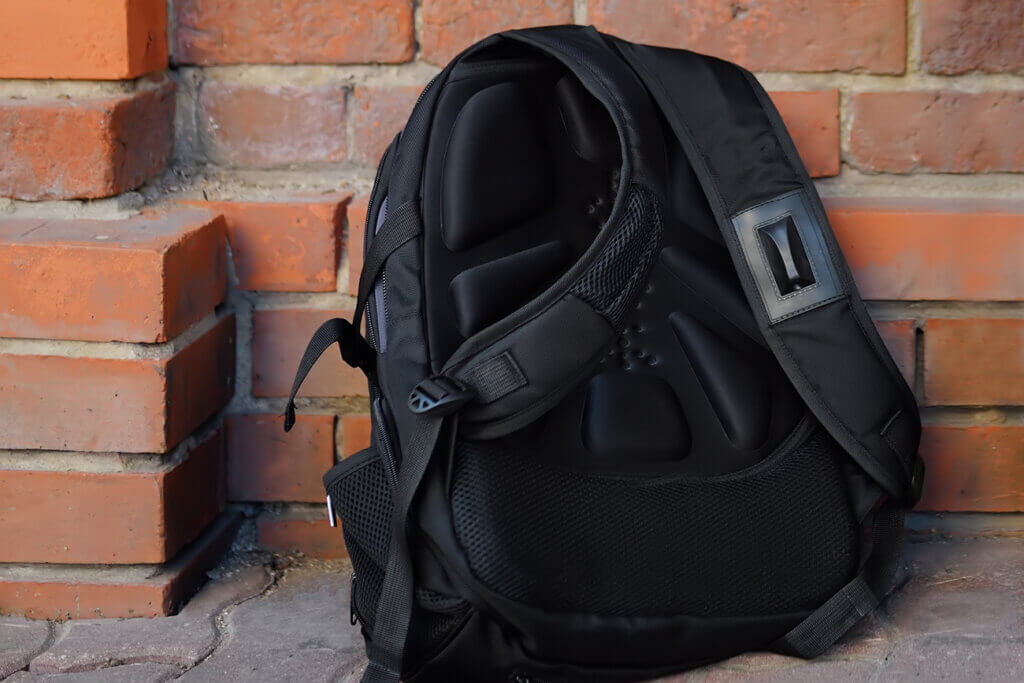
Practical: The back length of many modern school satchels is adjustable so that the satchel grows with the child. With a school bag with adjustable back length, parents avoid having to buy new, suitable satchels at short intervals. The following video from the manufacturer Step by Step Schulranzen (approx. 1:35 minutes) shows how a school bag that grows with the child can look and function:
A hip belt, with which some models are equipped, is also useful. It provides additional support, ensures better weight distribution on the child’s back and relieves the spine. We explain below what you should pay attention to when carrying the school bag correctly in our advice section “Correct handling of the school bag”.
The weight of the school bag
The weight of a school bag is just as important as its ergonomics. A satchel that is too heavy compresses and strains the child’s spine and can lead to posture and back problems. Since the school utensils that pupils carry in the satchel usually already weigh a lot, the tare weight of the satchel should be as low as possible. In the past, the DIN test also included the weight of the satchel. The satchel should not weigh more than ten percent of the pupil’s body weight. However, this percentage is outdated and the weight is no longer part of the DIN test. Nowadays, the total weight of a school bag can be up to 17 per cent of the body weight. The less the schoolchild weighs, the more parents should ensure that the weight of the satchel is as low as possible. It is also important to remember that school materials increase the weight of the satchel. Particularly light satchels weigh less than one kilogram, while heavy models can weigh up to 2.5 kilograms.
The origin of the 10 per cent rule and why it is outdated
The 10 percent rule originated before the First World War. It originally referred to the maximum weight a recruit’s knapsack could carry to prevent consequential damage from long-term exposure. This percentage was based on marches of 20 kilometres or longer. No child covers such a distance on foot on its way to school. Accordingly, the percentage was raised slightly. The University of Saarland has confirmed in a recognised scientific study (from 2009) that a school satchel can be heavier than ten per cent of the schoolchild’s weight without causing posture problems.
The following table shows some examples of the maximum satchel weight for schoolchildren of different weights:
| Body weight of schoolchild | Weight of satchel |
| 15 kg | 2,55 kg (2.550 g) |
| 20 kg | 3,40 kg (3.400 g) |
| 25 kg | 4,25 kg (4.250 g) |
| 30 kg | 5.10 kg (5.100 g) |
| 35 kg | 5,95 kg (5.950 g) |
| 40 kg | 6,80 kg (6.800 g) |
| 45 kg | 7,65 kg (7.550 g) |
| 50 kg | 8,50 kg (8.500 g) |
In addition to the weight of the schoolchild, his or her physical fitness and musculature have an influence on how heavy the school bag may be. How you can assess your child’s fitness with a simple test, we tell you in our advice section “Proper use of the satchel”.
Safety
A good school bag offers the highest possible level of safety in road traffic. This means that the school bag, which covers a large part of the child’s back, must be easy to see both in daylight and in the dark. For the DIN standard 58124 certificate, at least ten percent of the front and side surfaces of the school bag must be made of reflective material and at least 20 percent of fluorescent material. This means that certain areas of the satchel must be equipped with reflectors and have signal colours in order to meet the requirements of the DIN standard. In addition to neon yellow and neon orange, neon green and neon pink are now also considered signal colours.
Retrofitting satchels that are not DIN-compliant
Satchels that do not meet the safety requirements of DIN 58124 can be retrofitted with flashing lights, reflector tags or reflective surfaces that can be fastened with Velcro. Of course, you have to factor in additional costs for this.
In addition to road safety, it is important for the safety of a school bag that the individual components are safe, for example, that they do not have any sharp edges on which children can injure themselves. Furthermore, the components of a safe satchel do not contain any harmful substances.
The volume
When choosing a school bag, you must also consider the capacity. If you buy a satchel that is too small, your child will not be able to fit all the school utensils it needs. If you buy it too big, there is a risk that the child will pack more than necessary and the satchel will become too heavy. Commercially available school bags hold between 18 and 22 litres, which is usually quite enough for a normal school day. Some retailers have special XL or XXL models in their range that hold 25 litres or more. However, if you know that your child tends to need fewer materials and can store a few heavy books at school, for example, it is advisable to choose a smaller model. The smaller the backpack, and especially the shallower it is, the less risk there is that the satchel will shift the child’s centre of gravity and prevent him or her from maintaining an upright posture.
Handling and features
For easy handling of the school bag, it is important that the lid can be opened wide so that the pupil can easily take out his utensils or put them into the bag. In addition, the closure should be easy to open, preferably with one hand. To ensure that the bottom of the satchel can support heavy books for as long as possible without showing signs of fatigue, and that pupils can easily put the satchel down without the risk of it tipping over, a stable bottom plate is recommended. Although the satchel is mainly carried on the child’s back, it should be equipped with a sturdy, ergonomic handle on the top. It is useful, for example, for short journeys such as boarding the school bus, putting the satchel down and up, and for hanging it up. In addition, the following features are highly recommended:
Sensibly divided interior
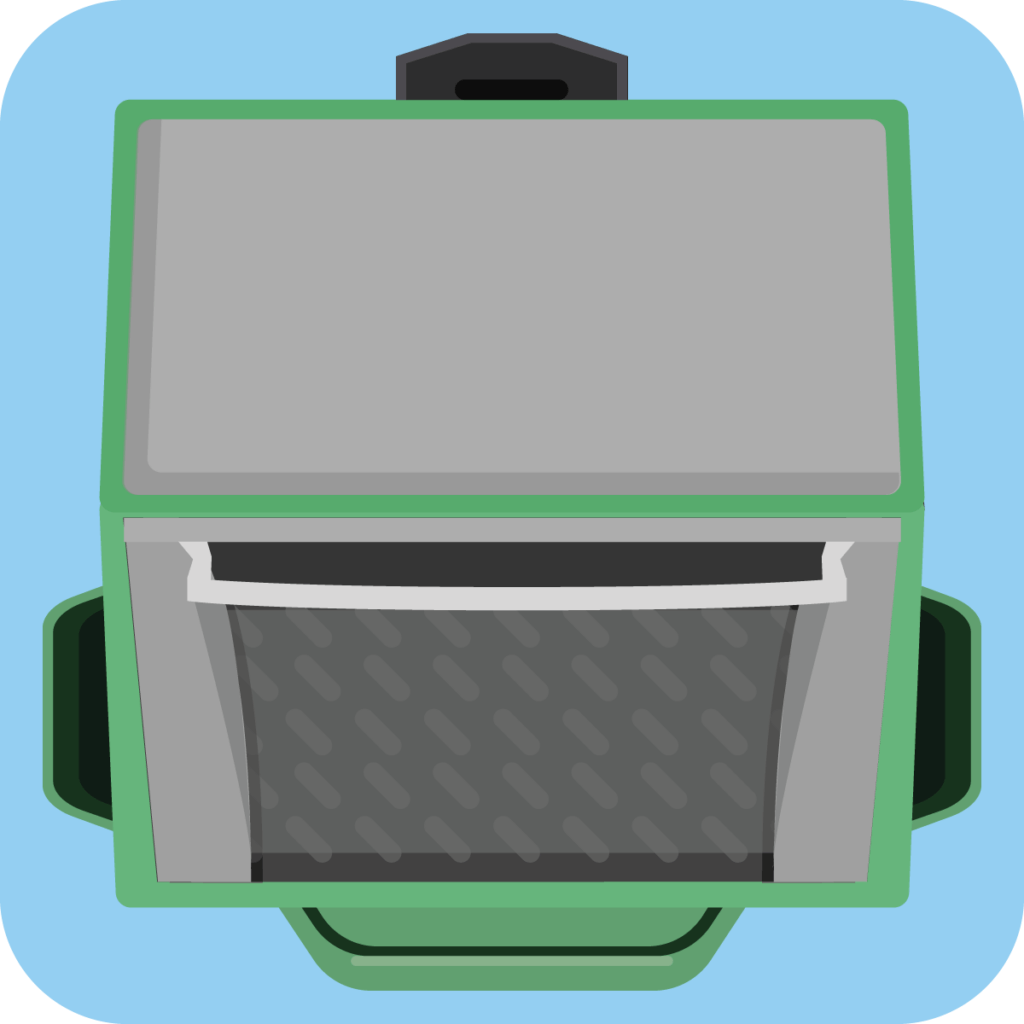
To ensure that the child can store its books, exercise books and other school equipment neatly in the satchel, it is important that the interior is well organised. Ideally, the satchel has a separate book compartment that is close to the inside (i.e. towards the child’s back when carried). This makes it easy to carry heavy books, and it also protects notebooks or similar items that bend easily from the books. Some models are also equipped with a subdivided main compartment so that books and exercise books can be sorted even better, for example according to the individual compartments.
Front and side pockets

Front and side pockets are useful for neatly storing items other than notebooks and books. A larger front pocket, for example, is suitable for storing a pencil case or lunch box and small items such as a wallet and keys. Students should carry their water bottle in a suitable side pocket. If it should leak, there is no danger to the school utensils. Some satchel models have practical drainage openings in the side pockets.
Water repellent impregnation

If it suddenly starts to rain on the way to school, the school items should be protected so that they do not get soaked. That’s why a good school bag has a water-repellent impregnation on its outer surface. Most models can withstand light and medium rain. In heavy rain, however, it is advisable to protect the satchel with a separate rain cover. The bottom of the satchel should ideally be made of a sturdy plastic tray and have four feet so that the schoolchild can easily place it on damp or wet ground, for example at the bus stop.
Satchels in a set
Many manufacturers offer their school satchels both individually and in sets. In addition to the satchel, the sets usually include a gym bag, a pencil case and a pencil case to match the design of the satchel. Buying such a set is recommended for the start of school. On the one hand, students will then have the most important school utensils together, and on the other hand, the sets are usually cheaper than buying them individually. If the child already has a pencil case and a gym bag before buying the satchel, it makes sense to buy the satchel separately.
Correct handling of the satchel
If your child carries his or her satchel incorrectly, posture and back injuries can occur – even if the satchel is ergonomic. In our advice section, we have collected some useful tips on how to carry and pack a school bag correctly. We also tell you how to do a little fitness test to find out whether the satchel can be a little heavier or whether you should be particularly careful about the weight of the satchel.
Carrying and packing the satchel correctly
To ensure that the satchel fits perfectly and does not put unnecessary strain on the child’s spine, the carrying straps should be neither too short nor too long. They are too long when the satchel hangs over the child’s bottom. In this position it causes an unhealthy hollow back posture. If the upper edge of the satchel is far above shoulder height, the straps are too tight and put strain on the lower spine. Ideally, the satchel should sit on the back in such a way that the top edge is at or just above shoulder height and the bottom edge is above the bottom. Satchels with a hip belt that distributes the weight better provide relief for the spine. To prevent the straps from chafing, make sure they are not too close to the neck.
It is also unfriendly to the back to carry the satchel one-handed on the upper handle over long distances. This handle is intended for lifting, carrying for short periods and hanging up the school bag. If the child carries the satchel by the handle with one hand over a longer distance, it puts one-sided strain on the spine.
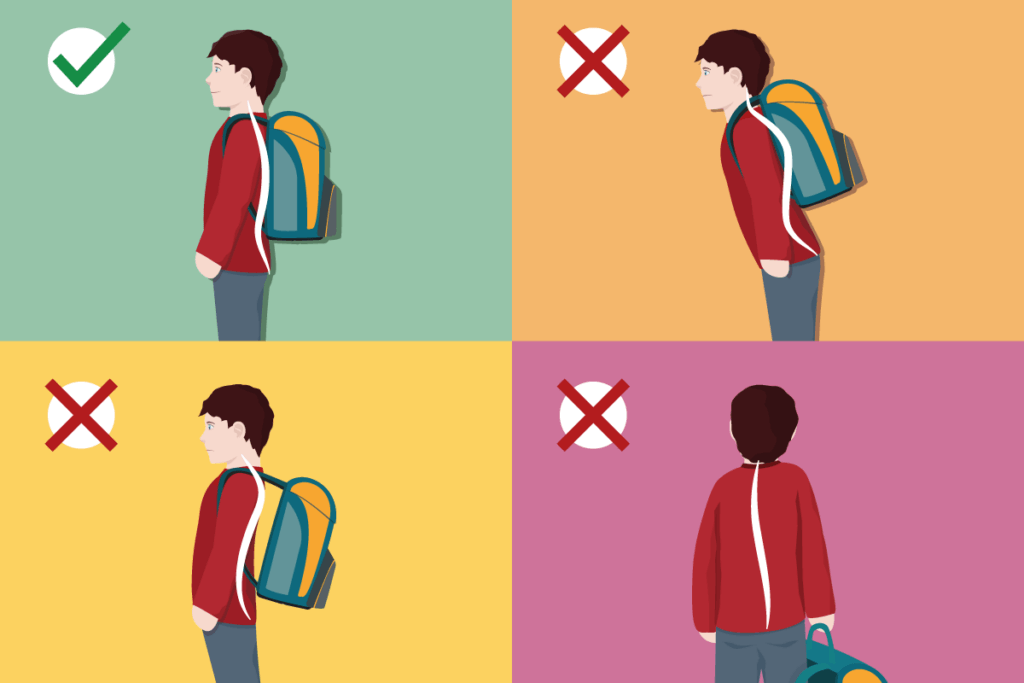
When packing the school bag, pupils and their parents should make sure that they only take the school materials that will be needed on the day. Books that students do not normally need at home can be left at school, if possible. To ease the strain on the back, it is advisable to store heavy books in a compartment as close to the back as possible.
Correct carrying and packing – checklist
The lower edge of the satchel sits above the buttocks.
The top edge is at shoulder level.
Shoulder straps have enough space between them.
Pack only what is necessary.
Carry heavy books close to the back.
The school bag fitness test
The maximum weight a school bag should have without harming the child depends, among other things, on the child’s musculature and cannot be said in general terms. Every primary school child is physically differently developed. With a small fitness test, which is based on the Saarbrücken School Bag Study of the Institute of Sports Science at Saarland University, parents can better assess how well developed their child’s muscles are and how heavy the school bag can be accordingly. The school bag fitness test consists of two simple exercises: Sit-ups and trunk lifts.
Sit-ups: Instructions
In the first part of the fitness test, the child does as many sit-ups as he or she can manage within 40 seconds. For the correct execution of the sit-ups, you need to pay attention to the following points:
- The child bends the knees.
- The feet are held.
- The child puts the fingertips to the temple.
- The thumb is held behind the earlobe.
- The child tenses the abdomen.
- With this posture, the child tries to straighten the upper body as often as possible.
- Caution: The head should not be pulled forward unnaturally, but should form a line with the spine.
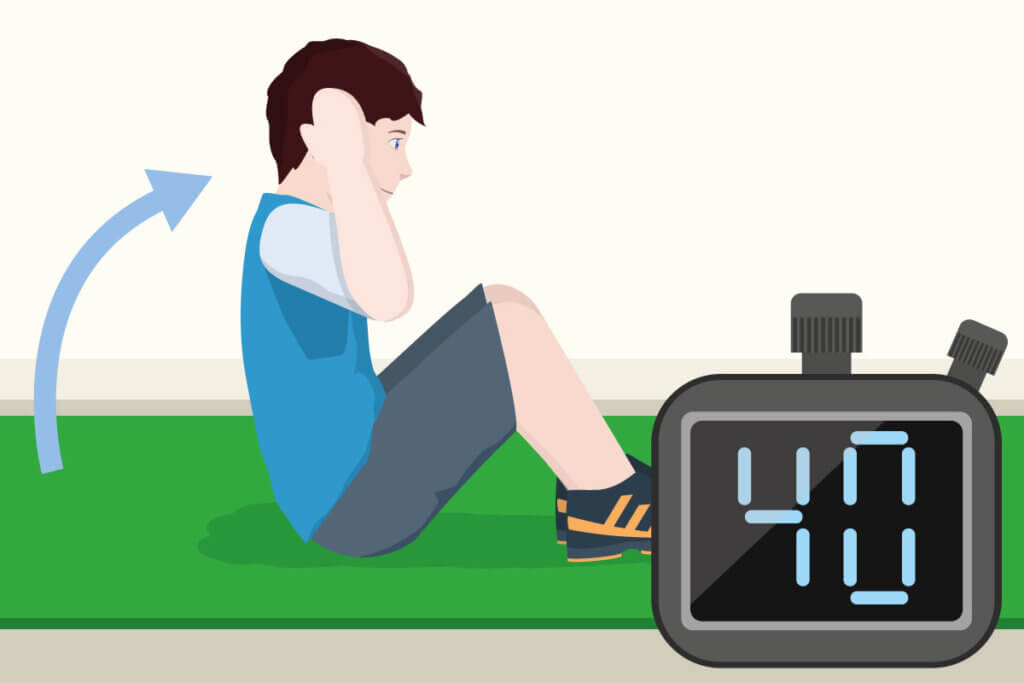
For the evaluation, count the number of sit-ups your child manages within 40 seconds.
Trunk lift: Instructions
The second exercise of the school bag fitness test is called trunk lift and works as follows:
- The child lies down on its stomach.
- His legs are held.
- With both hands the child holds up a one kilogram (one litre) bottle as long as possible.
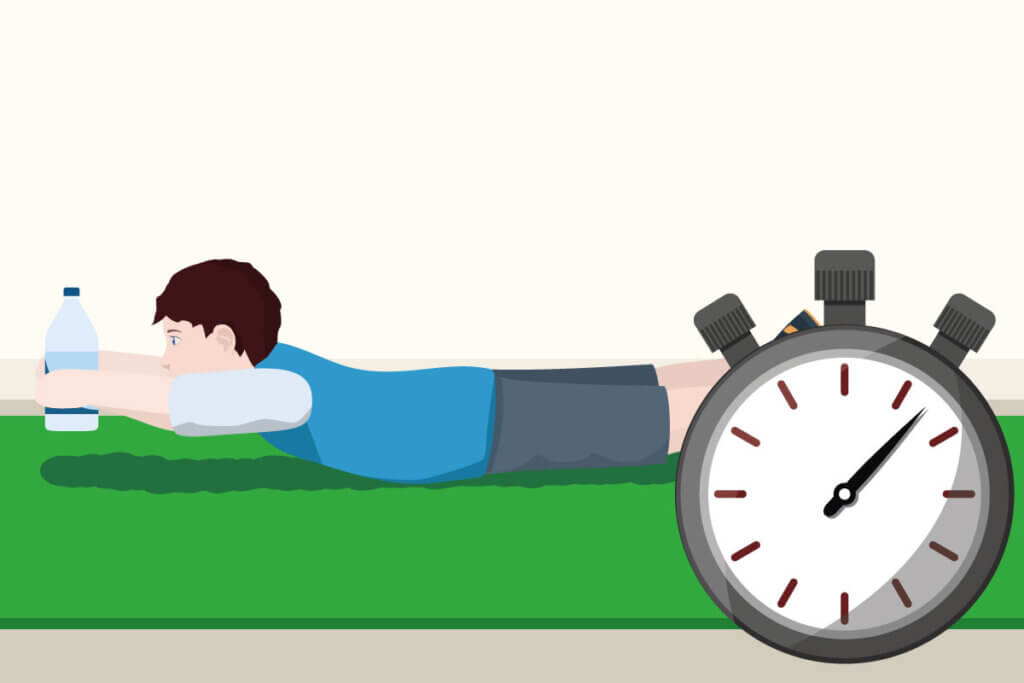
For the evaluation, time the time in which your child manages to hold the position. Make sure that your child keeps his or her head in line with the spine and does not lean unnaturally far backwards or forwards or downwards.
The evaluation of the fitness test
Depending on gender and the number of sit-ups performed as well as the duration of the torso lift, the child receives a certain number of points for the two exercises:
| Gender | Sit-Ups: Repetitions Completed | Trunk Raises: Duration | Achieved score |
| Girl | < 7 | < 3 | 0 |
| Boy | < 10 | < 5 | 0 |
| Girl | 7 bis 21 | 3 bis 25 | 1 |
| Boy | 10 bis 20 | 5 bis 25 | 1 |
| Girl | > 21 | > 25 | 2 |
| Boy | > 20 | > 25 | 2 |
If you add up the points for both exercises, the fitness range to which the child belongs can be derived from the total number of points achieved. From this, in turn, you can deduce the maximum weight that the school bag may have:

2 points – minimum range
It is best to buy a light satchel. Also make sure that your child only packs the bare essentials, that the satchel is less than 17 per cent of your child’s body weight and that he or she exercises regularly to help build muscles.

2 points – normal range
Check the weight of the school bag at regular intervals, about every fortnight. It should only weigh more than 17 percent of your child’s body weight in rare exceptional cases.

3 or 4 points – optimum range
If your child scores three or more points in the fitness test, he or she has well-developed muscles. This means that they can easily carry a somewhat heavier satchel. If the walk to school is shorter than 20 minutes, a satchel weight of slightly more than 20 percent of your child’s body weight is no problem now and then.
Popular brands and models
The most popular school bag brands
Ergobag | Scout | Step by Step | Herlitz | DerDieDas | Sammies | Satch
Numerous manufacturers are wooing new customers with even more different models. It is often difficult to keep track of them all, especially when you have to choose a school bag for the first time. As a small guide, we present some popular school bags from well-known brands with their most important features in the following overview.
| Model | ||||
| 1) Step by Step 2in1 | 29 x 38 x 21 | 1,2 kg | ✔ | From 105 cm |
| 2) Step by Step Space | 28 x 37 x 20 | 1,3 kg | ✘ | From 105 cm |
| 3) Ergobag Cubo | 25 x 40 x 20 | 1,1 kg | ✘ | 100 to 150 cm |
| 4) DerDieDas ErgoFlex | 33 x 40 x 23 | 0,8 kg | ✘ | From 105 cm |
| 5) Deuter OneTwo | 30 x 42 x 22 | 1,2 kg | ✘ | 123 to 145 cm |
| 6) Ergobag Pack | 25 x 35 x 22 | 1,1 kg | ✘ | 100 to 150 cm |
| 7) Herlitz Motion Plus | 41 x 28 x 20 | 1,0 kg | ✘ | From 105 cm |
| 8) McNeill Ergo Light Compact Flex | 33 x 38 x 20 | 1,2 kg | ✔ | From 105 cm |
| 9) Scout Alpha | 32 x 40 x 25 | 1,3 kg | ✔ | From 105 cm |
| 10) Scout Sunny | 30 x 39 x 20 | 1,2 kg | ✔ | From 105 cm |
The capacity of the models in the overview above is between 19 and 20.5 kilograms. With the exception of the mixed type OneTwo from Deuter, all the models presented are available in a practical set with accessories that match the satchel. With the exception of the products from Deuter and Herlitz, they are all equipped with a height-adjustable carrying system and can grow with the child.

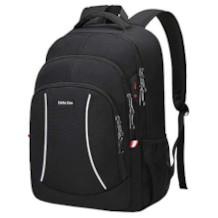
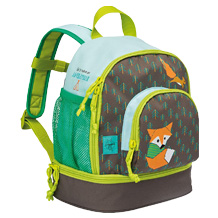
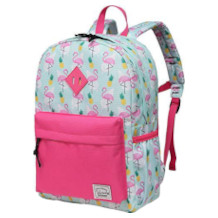

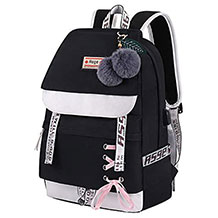
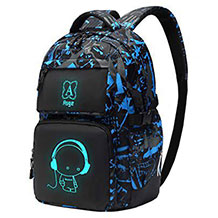
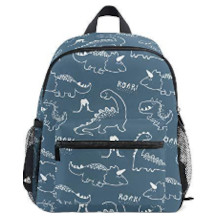
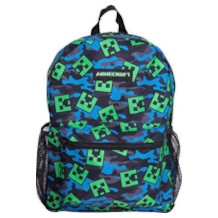
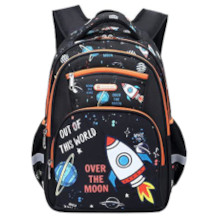

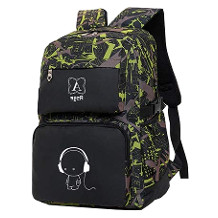
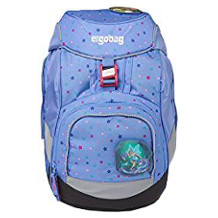

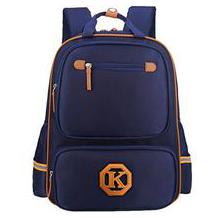

 5,039 reviews
5,039 reviews
